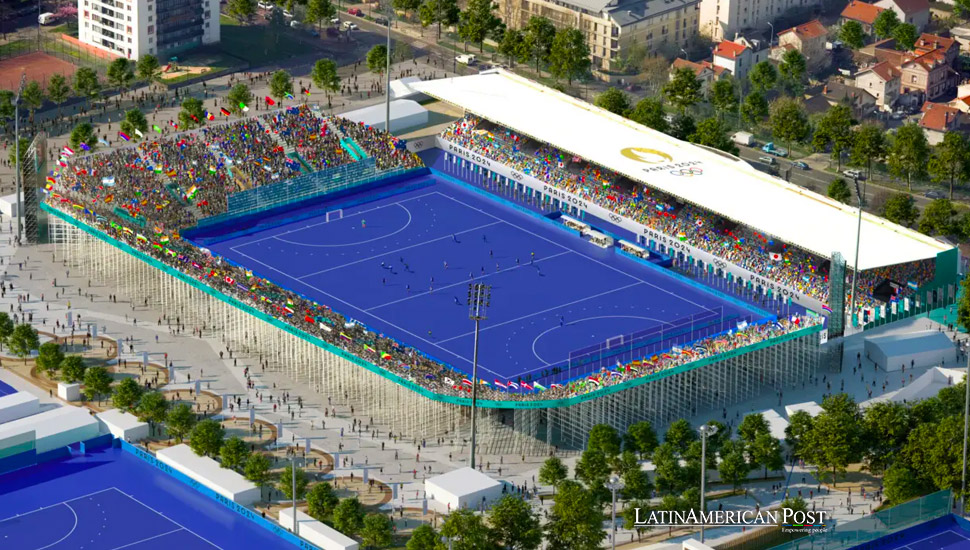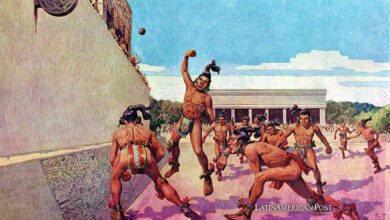Uruguay’s Historic Triumph and the Legacy of Paris’ Yves du Manoir Stadium

From the 1924 Olympics to the 2024 Games, the Yves du Manoir Stadium in Paris is a testament to sports history and innovation, bridging past and present. Uruguay’s historic soccer triumphs are central to its storied legacy.
A polyurethane blue carpet stretches over the grass where the Uruguayan soccer team was crowned Olympic champions a century ago and where British athletes Harold Abrahams and Eric Liddell raced, immortalized in the film “Chariots of Fire.” The latest eco-friendly synthetic turf, the first to achieve carbon neutrality, will allow hockey players to make precise passes, control the ball like never before, and slide with minimal injury risk. This advanced technology would have been unimaginable to the athletes of the 1924 Olympics, held at what was then called the Stade de Colombes.
The Stade de Colombes was the centerpiece of the 1924 Paris Olympics, hosting the opening ceremony, athletics, cycling, equestrian events, gymnastics, tennis, rugby, pentathlon, and several soccer matches, including the final where Uruguay triumphed over Switzerland 3-0. Designed by architect Louis Faure-Dujarric, the stadium originally had a capacity of 45,000 spectators. It was renamed in 1928 after French rugby player Yves du Manoir died in a plane crash. For the 2024 Games, it will be the venue for field hockey, making it one of the few sports facilities to host events in two separate Olympic Games.
The stadium’s historical significance extends beyond its name change. It was the birthplace of soccer’s “victory lap” tradition. After winning the Olympic gold on June 9, 1924, Uruguayan captain José “Mariscal” Nasazzi led his team around the field, arms raised, saluting the fans. FIFA later recognized this moment as the official origin of the victory lap.
The Historical Significance of Colombes
The Stade de Colombes was also where athletes Harold Abrahams and Eric Liddell earned their medals, a story dramatized in “Chariots of Fire.” Liddell, a missionary’s son, refused to run the 100 meters, his best event, because it was scheduled on a Sunday. Instead, he delivered a sermon in a Paris church. Abrahams, a Jewish athlete, won the 100 meters, overcoming the antisemitism of the time. Liddell later won bronze in the 200 meters and gold in the 400 meters on Colombes’ cinder track.
One of the most remarkable feats in sports history occurred here when Finland’s Paavo Nurmi won 1,500 meters and 5,000 meters with only an hour’s rest between races. A few days later, he added gold medals in the 3,000 meters team race and the 10 km cross-country, both individual and team. The latter is known as “the hell of Colombes” due to the extreme heat and challenging course, which saw only 15 out of 38 runners finish.
The stadium also hosted the 1938 World Cup final between Italy and Hungary, making it the first venue to host both an Olympic and World Cup final. The Italians urged to “win or die” by a telegram from Mussolini, performed the fascist salute before the match.
Colombes has been immortalized in cinema as well. The 1981 film “Escape to Victory,” directed by John Huston, depicted a fictional soccer match between Nazi and Allied forces at Colombes. However, it was filmed at the Hidegkuti Nándor Stadium in Budapest due to the poor condition of the Parisian venue. The film starred Michael Caine, Sylvester Stallone, Max von Sydow alongside soccer legends Pelé, Bobby Moore, and Osvaldo Ardiles.
Until 1972, Colombes was the home ground for the French national soccer and rugby teams before they moved to the Parc des Princes. The stadium has seen better days but remains a symbol of sporting achievement and resilience.
Embracing Modern Innovation
As the 2024 Paris Olympics approach, the Yves du Manoir Stadium will again be in the global spotlight. The new eco-friendly synthetic turf symbolizes the advances in sports technology. This innovation ensures that players can perform at their best while minimizing their environmental impact. The field’s carbon-neutral status reflects a growing trend towards sustainability in sports, an essential step as we face global environmental challenges.
In Latin America, where soccer is more than a sport but a cultural phenomenon, the significance of venues like Yves du Manoir resonates deeply. The region’s passion for soccer mirrors the historical importance of Colombes. From the legendary Maracanã in Brazil to the Estadio Azteca in Mexico, Latin America boasts storied stadiums that have witnessed unforgettable moments. These venues, like Yves du Manoir, serve as cultural touchstones, representing the triumphs and tribulations of a region where soccer is woven into the fabric of society.
Bridging Past and Present
The Yves du Manoir Stadium’s legacy is not just about its past glory but also its role in the future of sports. The stadium’s transformation for the 2024 Olympics symbolizes the blend of history and innovation, a theme that resonates across Latin America. The continent’s stadiums are undergoing similar transformations, with modern facilities built alongside historic venues, ensuring they remain relevant in the ever-evolving world of sports.
The shared history of venues like Yves du Manoir and Latin American stadiums highlights the global nature of sports. These stadiums are more than just physical structures; they are repositories of collective memories and cultural heritage. Modernizing these venues while preserving their historical significance is crucial in maintaining their relevance and ensuring they continue to inspire future generations.
As we look forward to the 2024 Paris Olympics, the Yves du Manoir Stadium stands as a beacon for the enduring spirit of sportsmanship and innovation. Its transformation reflects a broader trend worldwide, including in Latin America, where integrating modern technology and sustainable practices is becoming increasingly important.
For Latin American athletes and fans, the story of Yves du Manoir reminds them of the power of sports to transcend borders and bring people together. The stadium’s legacy, marked by historic achievements and modern advancements, inspires future generations to strive for greatness while embracing sustainability and innovation.
Also read: Artefactos históricos del fútbol uruguayo serán subastados en Montevideo
The Yves du Manoir Stadium’s rich history and modern transformation exemplify the enduring legacy of iconic sports venues. As we celebrate its past and look forward to its role in the 2024 Paris Olympics, we are reminded of the importance of preserving our cultural heritage while embracing the future. This narrative resonates deeply in Latin America, where the love for sports and the pursuit of excellence continue to inspire and unite communities across the continent.





